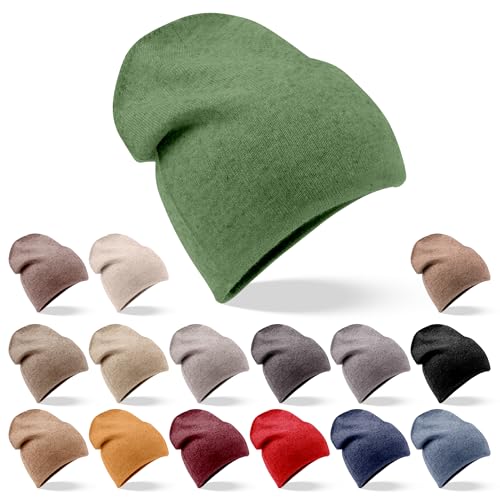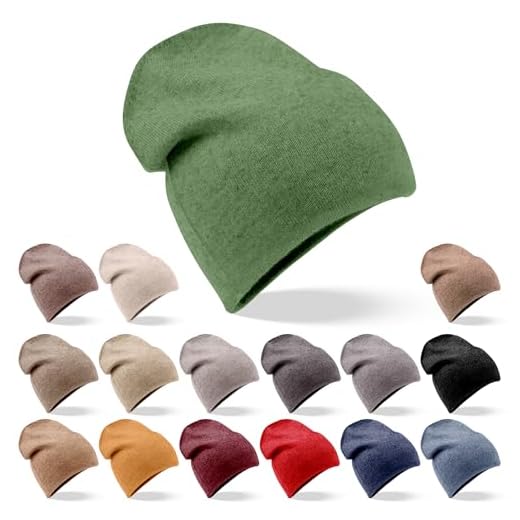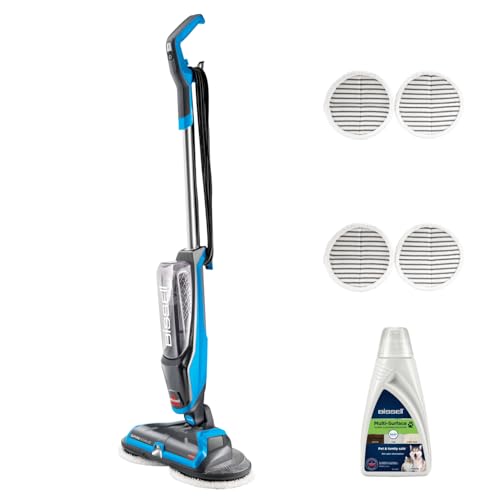




Wool is a beautiful and luxurious fabric that requires special care to maintain its softness, shape, and durability. Whether you have a wool sweater, scarf, or rug, knowing how often to wash it is essential for keeping it in pristine condition. While wool is naturally resistant to dirt and odors, regular washing is still necessary to remove any stains or buildup that may accumulate over time.
So, how often should you wash your wool items? The answer depends on several factors, including how often you wear them, the climate you live in, and the level of dirt or stains they encounter. As a general rule, it is recommended to wash wool clothing items, such as sweaters and scarves, every 3-5 wears. This frequency allows you to remove any dirt, sweat, or odors while preventing excessive washing that can damage the delicate fibers of the wool.
It’s important to note that not all wool items should be washed as frequently. Wool rugs, for example, can be vacuumed regularly to remove dust and debris, and only need to be washed every 6-12 months, depending on their use and exposure to dirt. Similarly, wool coats or jackets that are worn less frequently can be washed every 4-6 months or as needed.
When washing wool, it’s crucial to follow the care instructions specific to each item. Wool is a delicate fabric that can easily shrink, stretch, or lose its shape if not properly cared for. Hand-washing in cool water with a gentle wool detergent is usually the safest method, although some wool items may be machine-washable on a delicate or wool cycle. After washing, reshape the item and lay it flat to dry, as hanging it can stretch or distort the fabric.
How Often Should You Wash Wool?
Wool is a natural fiber that requires special care to maintain its quality and appearance. Washing wool too frequently can lead to shrinkage and damage, so it’s important to follow proper washing guidelines to keep your wool items in good condition. Here are some expert tips on how often you should wash wool:
1. Assess the level of dirt and odor

Before deciding to wash your wool item, evaluate its cleanliness. If there are no evident stains, dirt, or unpleasant odors, then it may not be necessary to wash it immediately. Wool has natural antibacterial properties, so it can often go longer between washes compared to other fabrics.
2. Spot clean minor stains
If you notice a small stain on your wool item, it’s best to spot clean it rather than subjecting the entire garment to a full wash. Gently blot the stain with a mild detergent or wool-specific cleaner, and rinse it out with cool water. Avoid rubbing or scrubbing the stain, as this can damage the wool fibers.
3. Air out your wool
Sometimes, airing out your wool item is enough to freshen it up. Hang it in a well-ventilated area, such as outside or near an open window, to allow any odors to dissipate. This method can be particularly useful for wool items that have been worn for a short period of time and don’t require a full wash.
4. Follow the care instructions
Always check the care instructions on your wool item before washing it. Different types of wool may have specific washing and care requirements. Some wool garments may need to be dry cleaned, while others can be hand washed or machine washed on a delicate or wool cycle. Following the care instructions will help prevent damage and maximize the lifespan of your wool item.
5. Wash wool items sparingly
As a general rule, it’s best to wash wool items sparingly to avoid unnecessary wear and tear. Unless heavily soiled, most wool items can be washed after several wears or when they start to show signs of dirt or odor. Overwashing wool can strip away its natural oils and lead to loss of softness and elasticity.
6. Store wool properly
Proper storage is also important in maintaining the cleanliness of your wool items. Make sure they are clean and dry before storing them away. Store them in a cool, dry place, away from direct sunlight and moisture, to prevent mold and mildew growth.
Remember, it’s crucial to read and follow the care instructions on your wool items to ensure they are properly cared for. By washing your wool items sparingly and taking care to avoid unnecessary damage, you can keep them looking and feeling their best for longer.
Recommendations from Experts

1. Follow care instructions

One of the most important things you can do to ensure the longevity and beauty of your wool items is to follow the care instructions provided by the manufacturer. These instructions are specifically tailored to the type of wool and the construction of the garment, so they should be your first point of reference.
2. Spot clean when possible
If your wool item only has a small stain or is not yet in need of a full wash, it is best to spot clean it. Use a gentle detergent specifically designed for wool, diluted in cold water. Gently blot the stain with a clean cloth or sponge, working from the outside in to prevent spreading the stain.
Once the stain is removed, rinse the area with cold water and gently squeeze out any excess water. Lay the item flat on a clean towel to air dry.
3. Hand wash for delicate items
For delicate wool items, such as cashmere or merino wool, it is best to hand wash them with care. Fill a basin or sink with cold water and a small amount of wool detergent. Submerge the garment and gently agitate it for a few minutes to distribute the detergent.
After soaking, drain the soapy water and refill the basin with clean, cold water. Rinse the item by gently squeezing it, and repeat this process until the water runs clear.
Gently squeeze out any excess water without wringing or twisting the garment. Lay it flat on a clean towel and gently roll it up to absorb more moisture. Finally, lay the item flat on a drying rack to air dry.
4: Use a mesh laundry bag for machine washing
For machine-washable wool items, such as some sweaters or blankets, it is best to use a mesh laundry bag to protect them during the wash cycle.
Place the wool item in the mesh bag, along with a small amount of wool detergent, and set the machine to a gentle cycle with cold water. Avoid using any harsh detergents, bleach, or fabric softeners.
Once the cycle is complete, promptly remove the item from the bag and gently reshape it if necessary. Avoid wringing or twisting the garment, and instead, lay it flat on a clean towel to absorb excess moisture. Finally, transfer the item to a drying rack to allow it to air dry completely.
5. Store wool items properly
When not in use, it is important to store your wool items properly. Clean the items according to the care instructions, and ensure they are completely dry before storing them.
Fold the items neatly and place them in a clean, breathable storage bag or container. Avoid using plastic bags, as they can trap moisture and promote the growth of mildew. Instead, opt for cotton or linen bags, or store the items in a cool, dry place.
Consider adding natural moth repellents, such as lavender sachets or cedar chips, to help protect your wool items from moth damage.
Factors to Consider
When determining how often to wash wool clothing, there are several factors to consider:
- Wear Frequency: The more often you wear a wool garment, the more frequently it should be washed. If you wear the garment daily or for extended periods of time, it may need to be washed more frequently than if you only wear it occasionally.
- Body Odor: Wool clothing is naturally resistant to odors, so if the garment doesn’t smell or develop a noticeable odor, it can be worn multiple times before washing.
- Stains: If the wool garment becomes stained, it should be washed immediately to prevent the stain from setting. Prompt spot-cleaning can also help prevent the need for a full wash.
- Climate and Season: In warmer climates or during summer months, wool clothing may need to be washed more often due to increased sweating. In cooler climates, wool clothing may not require frequent washing.
- Care Instructions: Always check the care instructions provided by the manufacturer for specific guidelines on washing wool garments. Some wool clothing may be labeled as machine-washable while others require handwashing or dry cleaning.
By taking these factors into account, you can determine the appropriate washing frequency for your wool clothing to keep it clean and well-maintained.
Frequent Mistakes to Avoid
- Washing wool too frequently: One of the most common mistakes people make when caring for their wool items is washing them too often. Wool is naturally resistant to odors and stains, so it doesn’t need to be washed as frequently as other fabrics. Overwashing can cause the wool fibers to become weak and dull over time.
- Using harsh detergents: Another mistake to avoid is using harsh detergents when washing wool. Wool is a delicate fabric that requires gentle care. Harsh detergents can strip away the natural oils in the wool and leave it feeling rough and itchy.
- Not checking the care label: Each wool item may have specific care instructions on its label. Ignoring these instructions can result in damage to the wool. Always take the time to check the care label and follow the recommended washing method.
- Using hot water: Wool is sensitive to high temperatures, so it is important to avoid washing it in hot water. Hot water can cause wool to shrink and lose its shape. Instead, opt for lukewarm or cold water when washing your wool items.
- Aggressive rubbing: When washing wool, avoid aggressive rubbing or scrubbing. This can cause the wool fibers to become tangled and damaged. Instead, gently squeeze and press the wool item to remove excess water.
- Not properly drying: Lastly, not properly drying wool can lead to shrinkage and misshaping. Avoid wringing or twisting the wool item as this can distort its shape. Instead, lay the wool flat on a clean towel and gently reshape it before leaving it to air dry.
Tips for Proper Wool Care
Proper care is essential to maintain the quality and longevity of your wool garments. Here are some expert tips to help you take care of your wool items:
1. Read the care instructions
Always check the care label on your wool items before washing. Different wool garments may have different care requirements, so it’s important to follow the instructions provided.
2. Spot clean when possible
If your wool item has a small stain or is only slightly dirty, try spot cleaning it instead of washing the entire garment. Use a mild detergent and gently blot the stained area with a clean cloth. Avoid excessive rubbing as it can damage the wool fibers.
3. Use cold water and mild detergent
When washing wool, use cold water and a gentle detergent specifically designed for wool or delicates. Avoid using hot water as it can cause shrinking or felting of the wool fibers. Gently hand wash your wool items or use the delicate cycle on your washing machine.
4. Avoid excessive agitation

Wool is a delicate fabric, so avoid excessive agitation when washing. Instead of scrubbing or wringing your wool items, gently squeeze out excess water using your hands or a clean towel. This will help prevent stretching or distorting the fabric.
5. Dry flat
After washing, reshape your wool item and lay it flat to dry. Avoid hanging wool garments to dry as they can stretch under their own weight. Lay the item on a clean towel or drying rack in a well-ventilated area away from direct sunlight.
6. Store properly
When not in use, store your wool garments in a cool, dry place away from direct sunlight. Use acid-free tissue paper or fabric bags to protect them from dust and moths. Avoid storing wool items in plastic bags, as they can trap moisture and promote mold or mildew growth.
7. Avoid excessive wearing
To keep your wool items looking their best, avoid excessive wearing. Wool is a natural fabric that needs time to breathe and recover between wears. Rotate your wool items and give them a break to maintain their shape and prevent excessive wear and tear.
8. Consider professional cleaning

If you’re unsure about washing your wool item at home, or if it has special embellishments or delicate trims, it’s best to take it to a professional cleaner who specializes in wool garments. They have the expertise and equipment to handle delicate fabrics and ensure your wool item is cleaned properly.
By following these tips, you can ensure that your wool items stay clean, fresh, and in great condition for years to come.
FAQ
How often should I wash my wool sweaters?
You should wash your wool sweaters every few wears or when they become visibly dirty.
Can I machine wash my wool garments?
It is generally recommended to hand wash wool garments to prevent damage, but some wool items can be safely machine washed on a delicate cycle. Always check the care label before washing.
How can I wash wool without shrinking it?
To wash wool without shrinking it, you should use cold water and a gentle, wool-specific detergent. Avoid agitation and excessive wringing, and instead gently squeeze out excess water and lay the garment flat to dry.
Is it necessary to dry clean wool items?
Dry cleaning is not necessary for all wool items. Many wool garments can be safely hand washed or machine washed at home. However, for delicate or structured wool pieces, it is best to consult a professional dry cleaner.












